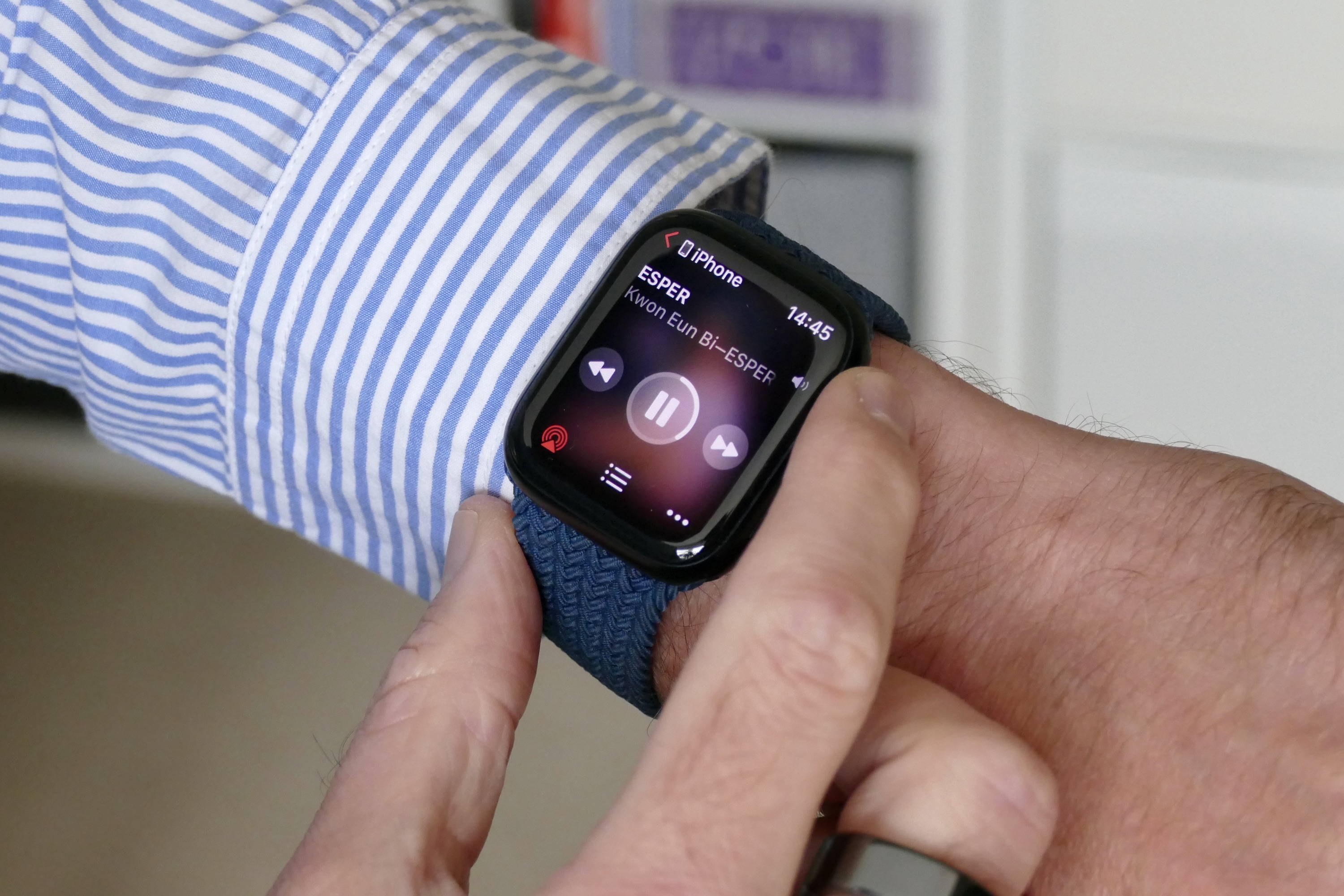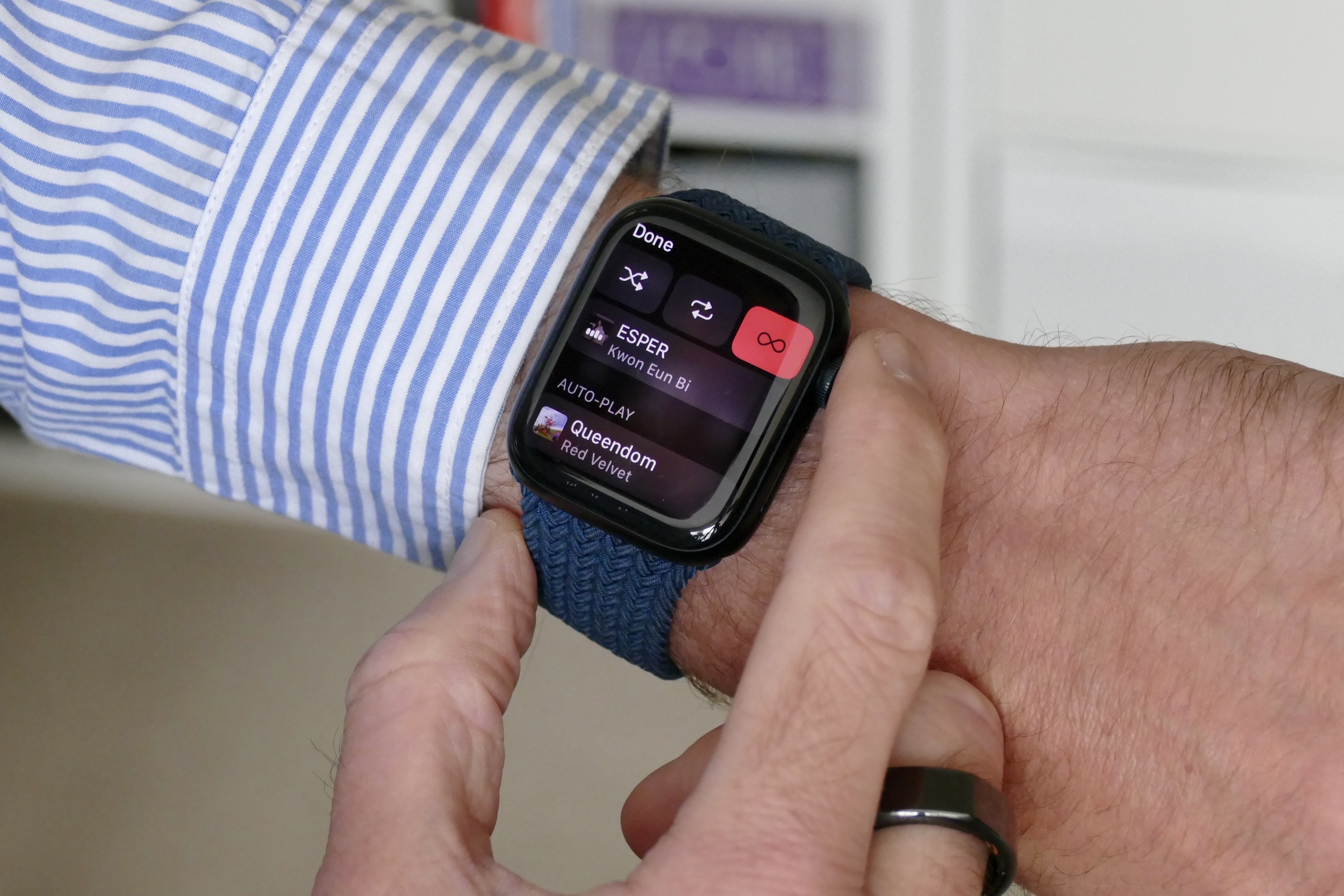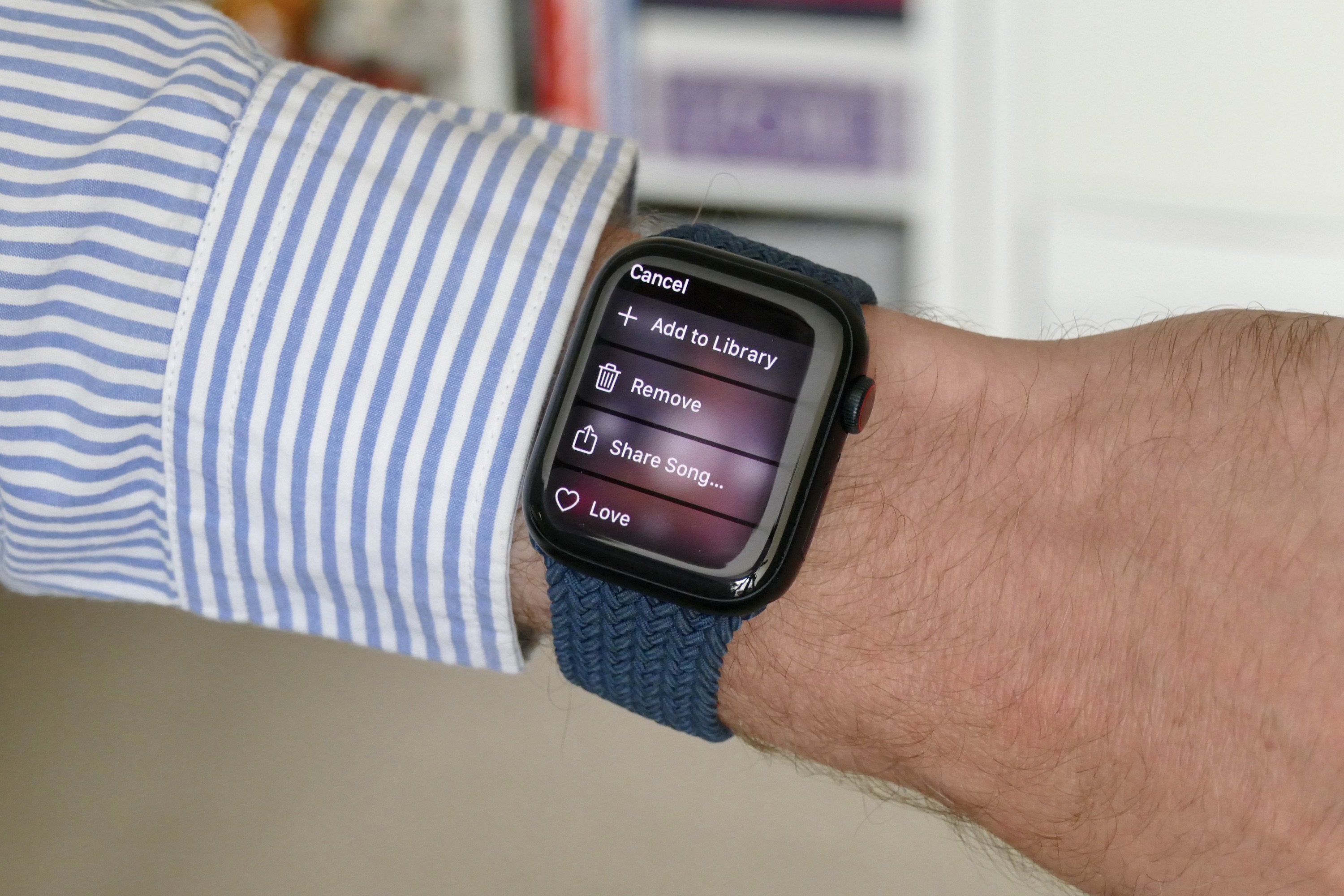I’m more than six months into Apple Watch Series 7 ownership. During this time, I have worn it on its own, with other smartwatches and fitness trackers, and even with traditional watches on the other wrist. I’ve tracked workouts, used its health-monitoring features, tried multiple different bands, used it to pay for things in shops, and enjoyed the seamless connection with my phone.
However, for all its technical ability, there are some core, simple, helpful everyday features and design elements that keep me wearing it. Here’s what I find makes the Apple Watch so easy to live with on a daily basis.
Rich notifications on a great screen
The primary hardware upgrade on the Series 7 over the Series 6 was the screen. I’ve quickly got used to the 20% additional screen area, the smaller bezels, and its incredible brightness too. It’s always visible at home from almost any angle, and I haven’t had a problem seeing it in bright sunlight either.

It’s sharp and detailed, and that means anything I read on the Watch benefits from it. I get a lot of notifications, and the system on the Apple Watch is miles ahead of those on competing smartwatches. I can do things with notifications — reply, delete, archive, like, or dismiss, for a start — that I can’t with any other smartwatch/iPhone pairing. And while this is helpful, it’s second to the sheer reliability and ease of use on the Apple Watch.
I never wonder if I have missed a notification, as so far the Apple Watch hasn’t failed to deliver one. It may sound like a basic function, but so many other smartwatches don’t give me the same peace of mind. The wonderful haptic feedback, which is so precise and recognizable, tells me one has arrived and even the tiniest of wrist movements shows the notification on the screen every single time. I don’t need to dramatically raise my wrist, check my phone, or switch windows on my computer to check what has arrived, because the Apple Watch has made it very clear whether I need to pay attention to the notification or not. It currently makes up for the iPhone’s lack of always-on screen.
WatchOS 8 plays a big part in the success of the notification system, and another aspect of the Watch and its tightly integrated software that I like is that when I switch to Work mode in Focus on my Mac Mini, the Watch and my iPhone immediately do the same. I’m not interrupted by those notifications when I don’t want to be. On the Apple Watch, not only do notifications reliably arrive, they reliably stay silent too. Few smartwatches get notifications absolutely right, and all could learn from the Apple Watch Series 7.
Headphones and audio controls
This may seem like such a basic thing, but I wear headphones a lot and I use my iPhone for music and podcasts. Having all the controls I need on my wrist means my phone is kept out of the way. You can control everything on the Apple Watch, from selecting a track and adjusting the volume, to interacting with Apple Music. The processing power of the Apple Watch is evident here as the interface is slick and seamless, even when dealing with the cloud-based Apple Music features.
While Apple’s Music app and the iTunes store can be very frustrating, especially when mixing purchased music, locally downloaded podcasts, and Apple Music as I do, all this gets left on the iPhone. You don’t have to use Apple headphones for it to be effective either. All of the features still operate as usual when I’m using my Sony WH-1000XM4 headphones, which means I don’t have to remember or mess around with the touch controls to quickly turn the volume down.
When is this helpful, you may wonder? When I wear headphones doing certain things — anything from cleaning the house to washing the car — I often keep my phone out of reach, and the Apple Watch means I’m still able to control what’s playing and how loud it is. It’s a simple feature, but I find it incredibly helpful.
The Braided Solo Loop is the best Watch band
Choosing the right band for your Apple Watch is crucial to really enjoying it, but knowing which one is right for you is the hard part. Here’s how I wear my Apple Watch, and why the Braided Solo Loop fits in perfectly. I want the Apple Watch to fit comfortably on either wrist, and I need it to make good contact when I’m tracking a workout, but then be comfortable and unrestrictive at other times. I don’t often wear it “smartly,” so having a band that’s suitable for formal or smart wear isn’t necessary.

The Braided Solo Loop is exactly right. The amount of stretch and give in the band means it’s never too tight and never bothersome, I can happily swap to my right wrist without it feeling odd or annoying, and I only have to push it up my wrist slightly to ensure the heart rate tracking is accurate.
But more than that, I love the style. It’s pretty much unique across the smartwatch market, and while the Sport Loop band has been emulated by others, the Braided Sport Loop is still only associated with Apple and the Apple Watch. It’s versatile, comes in different colors, and has proven to be very hardwearing too. I’ve used it as my main Watch band since the beginning of the year and it still looks like new. It’s expensive, but it is worth it.

One thing to note is if you can try one on before you buy, then it will help you get the right size. I initially used Apple’s online sizing system and the length it recommended turned out to be too big. I subsequently ordered the size down from Apple’s online tool’s suggestion. While you can get cheaper versions, they are nowhere near as good as the original.
Closing the rings is motivational
Move, Exercise, and Stand. Those are the three sections the Apple Watch prioritizes to give you an overview of how active you’ve been on a daily basis. It’s simple yet informative, and I find it motivational. I’m not an athlete and I don’t regularly play any sports worth tracking, so Apple’s Rings are a great way for me to see just how inactive I’ve been, prompting me to do something about it.
Daily progress is visible on the Watch itself, but to see historical data, you have to visit the Apple Health app on your phone. This is sensible as it keeps the Watch focused on the her and now. When I do meet a goal, I like the animation and the haptic vibration. When I do want to track an activity, it’s very easy — I just use the recent apps menu (accessed using the button on the Watch) and, within a few swipes, the activity tracking is going.

Again, it all sounds so basic, but the thing is not every wearable or smartwatch makes starting and tracking a workout so simple. Whether it’s not-quite-logical button presses to find the right menu, turning the volume down on annoying voice assistants telling you your stats, or waiting for it to grab a GPS signal, these are not issues faced by the Apple Watch. A couple of taps and you’re off and running. Or walking, or cycling, or one of dozens of different exercises. It may be simple, but it’s definitely not basic.
You only benefit from a smartwatch’s health features when you wear it, and you’ll only ever bother with using its functions when they’re intuitive and speedy. The Apple Watch Series 7 delivers on both these fronts.
Reliable battery
The Apple Watch’s overall reliability is a theme of this article, and that continues with the battery performance. I don’t wear it to track sleep — I use the Oura Ring for that — but I do wear it all day from around 8 a.m. to close to midnight, and without fail, when I turn it off at that time, the battery has at least 50% left even with a workout tracked.
This means the Apple Watch Series 7 is more than capable of lasting for two working days. I wore it for a weekend away and didn’t take the charger with me, and it didn’t enter the Low Power mode until I had returned home on the second day. While it can’t match battery winners like the Huawei Watch GT 3 Pro, it’s still good performance as this is without any alterations to the health tracking or always-on screen.
What’s bad about the Apple Watch Series 7?
Looking back at my review published in October 2021, I wanted to see the negative aspects I mentioned and whether Apple had fixed any over the past months through software updates. However, the one downside I mention is that the Apple Watch only works with the iPhone, and to nobody’s surprise, that continues on. Does this mean the Apple Watch Series 7 is faultless?
No, but it’s not really a problem solely with the Apple Watch. You don’t need a smartwatch in the same way you probably need a smartphone. It’s still an accessory that will undoubtedly enhance your smartphone and increase convenience, but many of the highly beneficial health-tracking features can be found on fitness-tracking wrist bands sold for a fraction of the price. If your phone isn’t essential to your everyday life, I’d point you toward buying a really nice traditional watch instead of a smartwatch.
I’ve worn the Apple Watch Series 7 since it was released, and try as I might, I can’t come up with any major downside outside of it being a bit frivolous, which holds true for every smartwatch. If you’ve been looking at the Apple Watch Series 7 after seeing how it will fit into your life, but have not yet made the jump, just do it. You won’t be disappointed.






